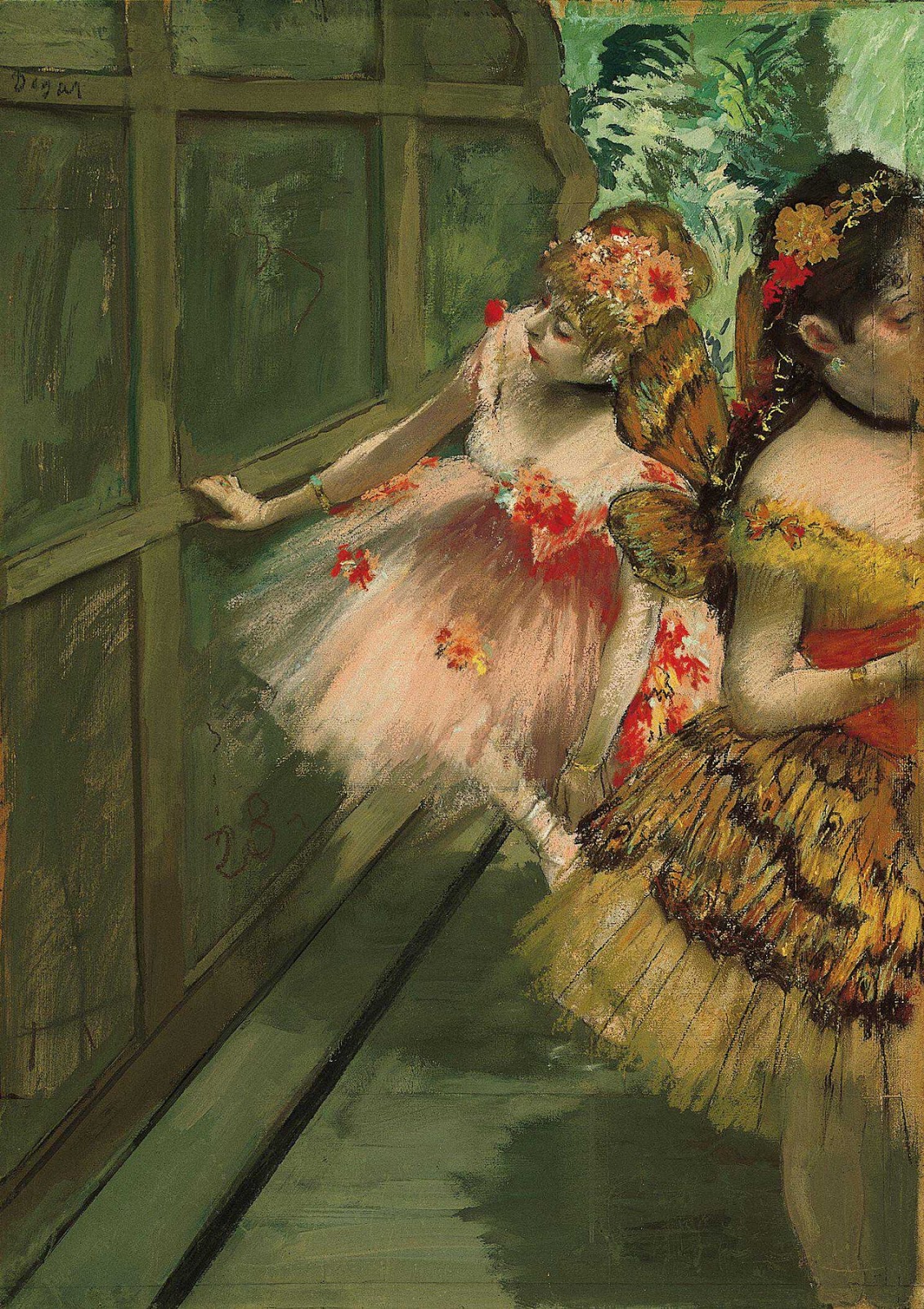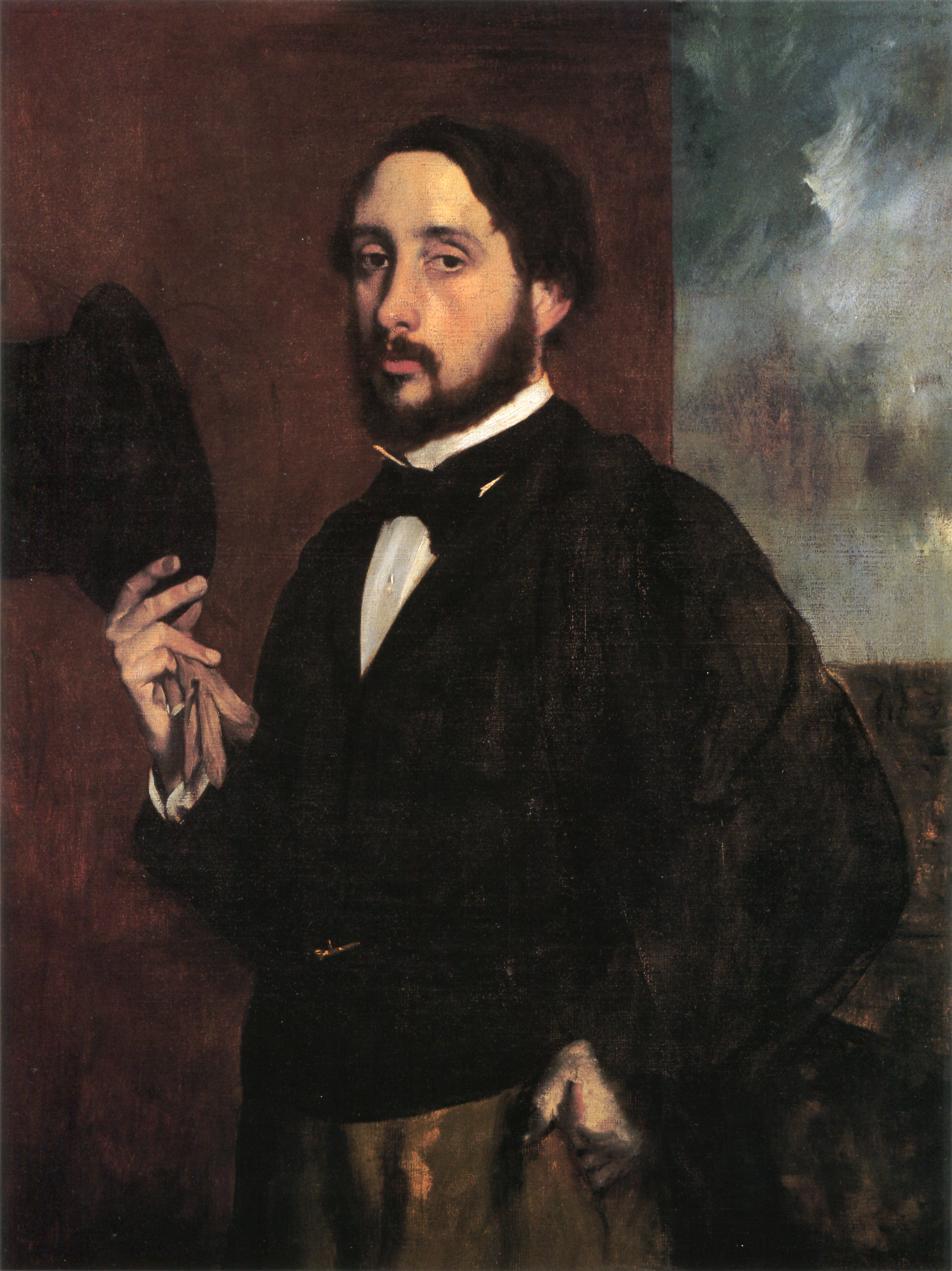Approximately half of Edgar Degas' oeuvre of paintings and pastels features dancers. Perhaps he recognized a parallel between their art, in which precise, demanding techniques are made to appear effortless and beautiful, and his own. Examining the dancer at rest, in rehearsal, behind the scenes, and onstage, he took an almost documentary approach to this subject.
Several of Degas’ ballet scenes were among the twenty-four works he had shown at the second Impressionist exhibition in 1876. This pastel exemplifies the artist's innovative techniques and distinctive style. He used a variety of media, but the most striking is his virtuoso use of pastel to achieve luminous colors and diaphanous textures. This work also demonstrates Degas' method of arranging his figures asymmetrically, allowing one figure to partially block off another, or be cut off by the picture frame. The composition is made up of at least ten pieces of paper, which he added to enlarge the original drawing of the rear figure. The most extraordinary addition is the narrow strip of paper along the right side, just wide enough to include the dancer's eye.
Degas' preoccupation with dancers was social as well as formal: he often made quite explicit references in his work to the backstage interactions that took place between female performers and their gentlemen patrons.


 Edgar Degas
Edgar Degas